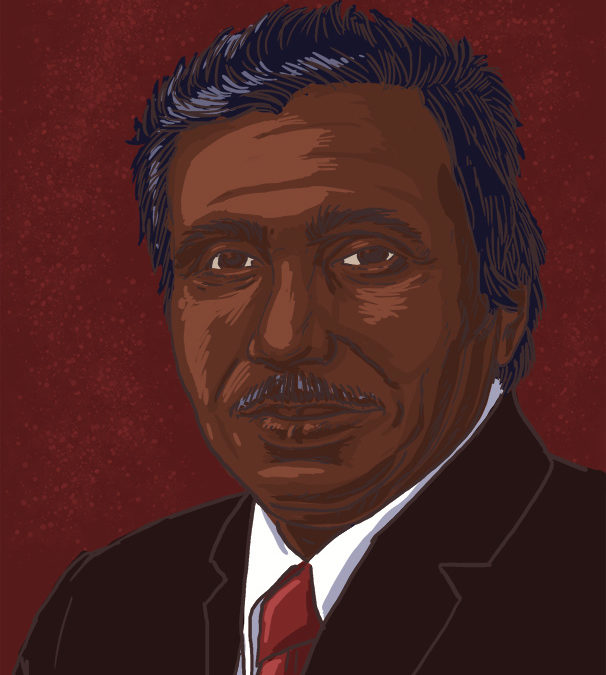Born in 1929 in Dhaka, Bangladesh, in what was then British India, Fazlur Rahman was a structural and architect and noted father of “tubular” design. As a young man in India Khan studied civil engineering at Bengal Engineering College and gained a Bachelor of Civil Engineering degree from Ahsanullah Engineering College, University of Dhaka before moving to the US to study at the University of Illinois in Chicago in 1952, receiving Master’s degrees in structural engineering and theoretical and applied mechanics and a PhD in structural engineering. Khan became a US citizen in 1967.
Khan’s most notable innovation was that of “tube” design, a technique that moves the supports of high-rise structures from center of the building to the outer frame, allowing buildings to be higher and incredibly stable when faced with high winds and seismic activity while also allowing for greater interior space. It’s been speculated that Khan’s designs have not yet met its limit in terms of height, which is impressive as it is already responsible for the tallest structures in the world.
Over the years Khan expanded on his basic “tube” designs with many variations. While the basal form was that of a Framed Tube, which incorporated braced frames joined near their edges essentially caging and reinforcing the inner structure, other variants like the Trussed Tube incorporated an extra set of braces crossing diagonally across the frame of the building in an “X” design, examples of this x-bracing can be found in the design of the John Hancock Center in Chicago. Other examples include the Bundle Tube in Willis Tower (formerly Sears Tower) in Chicago, the Tube in Tube system in the Petronas Towers in Kuala Lumpar, Malaysia, and the Outrigger and Belt Truss system used in the U.S. Bank Center, in Milwaukee.
Fazlur Rahman Khan has been called the “Einstein of structural engineering” and the “Greatest structural engineer of the 20th century,” while his innovations in “tube” design would be more than enough to warrant such accolades, he has also innovated in other ways. Khan was an early pioneer in Computer-Aided Design (CAD) and made major changes in the use of construction materials like the use of light weight concrete in high-rises at a time when concrete was only being used in smaller structures.
Sadly we will never know what innovations may have come as Khan passed away from a heart attack at the fairly young age of 52 while on a visit to Jeddah, Saudi Arabia. Though his life was shorter than expected he made a big impact on the city skylines we will build from now on.

